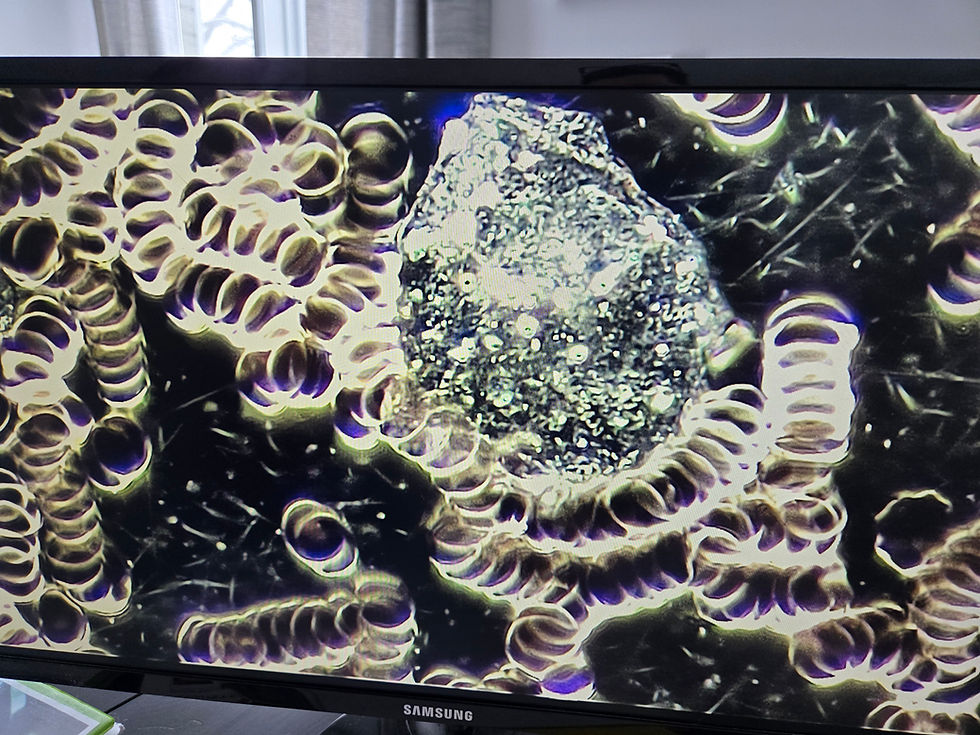Live Blood Analysis Unlocks Your Wellness Potential
- tarataylorhoole
- Nov 10
- 5 min read
Understanding your health at a deeper level can open doors to better wellness choices. Live blood analysis offers a unique window into your body’s current state by examining a fresh blood sample under a microscope. This method provides immediate insights that can guide lifestyle changes, nutritional adjustments, and early detection of potential issues.

What Is Live Blood Analysis?
Live blood analysis involves taking a small drop of blood from the fingertip, and placing it on a glass slide. The sample is then observed under a high-powered microscope while still fresh and alive. Unlike traditional blood tests that require lab processing and focus on chemical analysis, live blood analysis looks at the physical condition of blood cells in real time.
This approach allows practitioners to see:
The shape and size of red blood cells
The presence of white blood cells and their activity
Platelet clumping or abnormalities
Signs of toxins or indications of yeast overgrowth
Indicators of hydration and nutrient status
By observing these factors, practitioners can identify imbalances or stressors affecting the body’s overall health.
How Live Blood Analysis Works

The process is straightforward and non-invasive. After cleaning the fingertip, a small drop of blood is collected and immediately placed on a slide. The slide is then examined under a dark-field microscope, which enhances the contrast of the cells without staining.
The live state of the blood cells reveals dynamic interactions and conditions that static lab tests cannot capture. For example, the way red blood cells cluster or the activity level of white blood cells can indicate immune function or inflammation.
Practitioners often use this information alongside a client’s health history and symptoms to create personalized wellness plans.
Benefits of Live Blood Analysis
Live blood analysis offers several advantages for those seeking to improve their health:
Immediate feedback: Results are available during the session, allowing for real-time discussion and adjustments.
Visual learning: Seeing your own blood cells can motivate lifestyle changes by making health issues more tangible.
Early detection: Subtle changes in blood cell appearance may signal nutritional deficiencies, dehydration, or toxin buildup before symptoms appear.
Personalized guidance: Practitioners can tailor diet, supplements, and lifestyle recommendations based on observed blood conditions.
Non-invasive and quick: The test is simple, painless, and takes only a few minutes.
For example, a client with consistently clumped red blood cells might be advised to increase hydration and reduce inflammatory foods. Another person showing signs of yeast overgrowth could benefit from dietary changes and probiotics.
What Live Blood Analysis Can Reveal

This method can highlight a variety of health factors, including:
Nutrient deficiencies: Poorly shaped or fragile red blood cells may indicate low iron, vitamin B12, or folate.
Immune system status: Active white blood cells suggest the body is fighting infection or inflammation.
Toxin levels: Presence of debris or unusual particles can point to environmental or dietary toxins.
Hydration levels: Thick or sticky blood cells often reflect dehydration.
Digestive health: Indications of poor protein or fat digestion can be seen as well as indication of of yeast or bacterial imbalance.
These insights help guide targeted interventions to support the body’s natural healing processes.
Limitations and Considerations
While live blood analysis provides valuable information, it should not replace standard medical testing. It is best used as a complementary tool alongside conventional diagnostics.
Some limitations include:
Subjectivity: Interpretation depends on the practitioner’s experience and training.
Lack of standardization: There is no universal protocol, which can lead to inconsistent results.
Not diagnostic: It cannot definitively diagnose diseases but can indicate areas needing further investigation.
Always consult with a licensed healthcare provider for any serious health concerns. Live blood analysis is best suited for wellness support and early detection rather than medical diagnosis.
How to Prepare for a Live Blood Analysis Session
To get the most accurate results, consider these tips before your session:
Avoid eating for at least 3-4 hours prior.
Stay well-hydrated to ensure clear blood flow.
Avoid caffeine or smoking before the test.
Inform the practitioner about any medications or supplements you are taking.
These steps help ensure the blood sample reflects your typical health status.
What to Expect During Your Session
During the appointment, the practitioner will:
Clean your fingertip and collect a small blood drop.
Place the sample on a slide and examine it under the microscope.
Show you the live image on a screen or monitor.
Explain what the blood cells reveal about your health.
Discuss personalized recommendations based on the findings.
The session usually lasts 60 minutes and provides an interactive experience where you can ask questions and learn about your body.
I work with clients in the Belleville/Quinte West/Brighton Ontario areas. For this service, I would need to see you in person. This service is offered in Brighton at the Sunflower Health Shop and in Belleville at Absolute Wellness (Ontario).
Real-Life Examples of Wellness Improvements
Many people have found live blood analysis helpful in making positive health changes. For instance:
A client with signs of dehydration and poor circulation improved energy levels by increasing water intake and adding circulation-supporting exercises.
Someone showing yeast overgrowth in their blood adjusted their diet to reduce sugar and incorporated probiotics, leading to better digestion and fewer infections.
Another individual with fragile red blood cells focused on iron-rich foods and supplements, improving their anemia symptoms.
These examples show how visual feedback can motivate and guide effective wellness strategies.
Choosing a Qualified Practitioner
Because interpretation requires skill, it’s important to select a practitioner with proper training and certification in live blood analysis. Look for professionals who:
Have formal education in nutrition, naturopathy, or related fields
Use live blood analysis as part of a broader health assessment
Provide clear explanations and evidence-based recommendations
Respect medical boundaries and refer clients to doctors when needed
A good practitioner will use live blood analysis to support your health journey, not replace medical care.
Integrating Live Blood Analysis Into Your Wellness Routine
Live blood analysis can be a valuable tool for ongoing health monitoring. Consider scheduling sessions:
When starting a new diet or supplement plan
To track progress after lifestyle changes
If you experience unexplained symptoms or fatigue
As part of a holistic wellness checkup
Regular analysis helps you stay informed about your body’s response and adjust your habits accordingly.
Final Thoughts on Unlocking Your Wellness Potential
Live blood analysis offers a unique perspective on your health by revealing the condition of your blood cells in real time. This insight can motivate positive changes, detect early signs of imbalance, and support personalized wellness plans.
If you want to explore this method, find a qualified practitioner and approach the process as one part of a comprehensive health strategy. By combining live blood analysis with good nutrition, hydration, exercise, and medical care, you can unlock your wellness potential and take charge of your health.
Start by scheduling a session and see what your blood reveals about your body today.










Comments